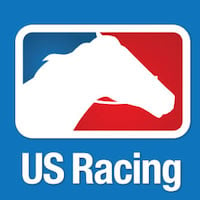Horse racing can feel intimidating for beginners, especially when the program is filled with abbreviations and categories that look like a secret code. One of the most important parts of understanding all horse racing types of races. Race classes determine the quality of the horses, the type of competition, and often the difficulty of the race. Once you understand how classes work, handicapping becomes much easier and betting becomes far more strategic.
This guide breaks down the major categories you will see at racetracks across North America, along with tips on how to use this information when betting.


Every horse has a certain level of ability. Race classes exist to match horses with others of similar skill so that races stay competitive. When a horse moves up or down in class, it is usually a key signal for handicappers. A drop in class can mean the horse is finally in against easier competition. A move up in class can mean the trainer sees improvement or wants to test the horse at a higher level.
Knowing class levels helps you identify:
In horse racing, a claiming race is a race where every horse is basically for sale.
If a horse runs in a claiming race with a price tag of, say, 20,000 dollars, that means any licensed owner or trainer can buy that horse for 20,000 dollars before the race starts.
This process is called “claiming” the horse.
So if the horse wins and takes home, for example, $12,000 in prize money, that still goes to the original owner. The buyer only receives the horse.
Claiming races exist to:
Horses usually run in claiming races when:
Scenario 1: “Drop in class”
A horse that has been struggling in $30k claiming races moves to a $15k claiming race.
This means:
“He is now running against cheaper, easier horses.”
Scenario 2: “Trainer claimed him last race”
That means someone bought the horse during a claiming race and now trains him.
Now, let us break down each major class.
A maiden race is for horses that have never won a race. Every horse starts their career at the maiden level. There are two types of maiden races:
These are the highest quality maiden races. Horses in MSW races cannot be claimed. They usually come from strong barns, good pedigrees or show potential in morning workouts. MSW fields are often filled with promising two and three-year-olds that trainers believe can develop into stakes horses.
Signals when handicapping:
These races allow the horses to be purchased (claimed) for a set price. They are designed for horses that need softer competition. The lower the claiming tag, the weaker the field tends to be.
Signals when handicapping:
Allowance races sit above maiden races but below stakes races. They attract horses that have already won but are not ready for stakes-level competition. Conditions vary, but most allowance races restrict entries by number of wins, age or earnings.
For example:
Allowance races are often where talented horses develop. Many future stakes stars run in these conditions early in their careers.
Signals when handicapping:
Claiming races are the backbone of North American horse racing. Every horse entered can be purchased for the claiming price before the race. The claiming tag helps keep competition fair and prevents wealthy owners from dominating every race with high quality horses.
Claiming races come in many levels, based on price:
The higher the price, the better the horses tend to be. Many good but not elite horses spend their career in these races.
Signals when handicapping:
Stakes races are the top of the sport. These are the events that produce champions and major headlines. Stakes races feature the highest quality horses and the biggest purses.
There are several types of stakes races:
These are quality races but not graded. Many promising horses run here before stepping up.
These are the most prestigious races in North America.
Stakes horses are faster, more consistent, and trained by top barns. These races usually feature strong pace setups and tighter competition.
Signals when handicapping:
Understanding class movement is one of the most productive tools for new bettors. Here is how it helps:
Class alone does not decide a race, but it is one of the strongest indicators you can use while handicapping.
Race classes are the foundation of horse racing. Once you understand what each category means, the program becomes much easier to read and the races become far more predictable. Whether you are betting maiden races, following allowance runners or watching a major Grade 1 event, knowing the class structure helps you understand the story behind every horse on the track.


The writing team at US Racing is comprised of both full-time and part-time contributors with expertise in various aspects of the Sport of Kings.























